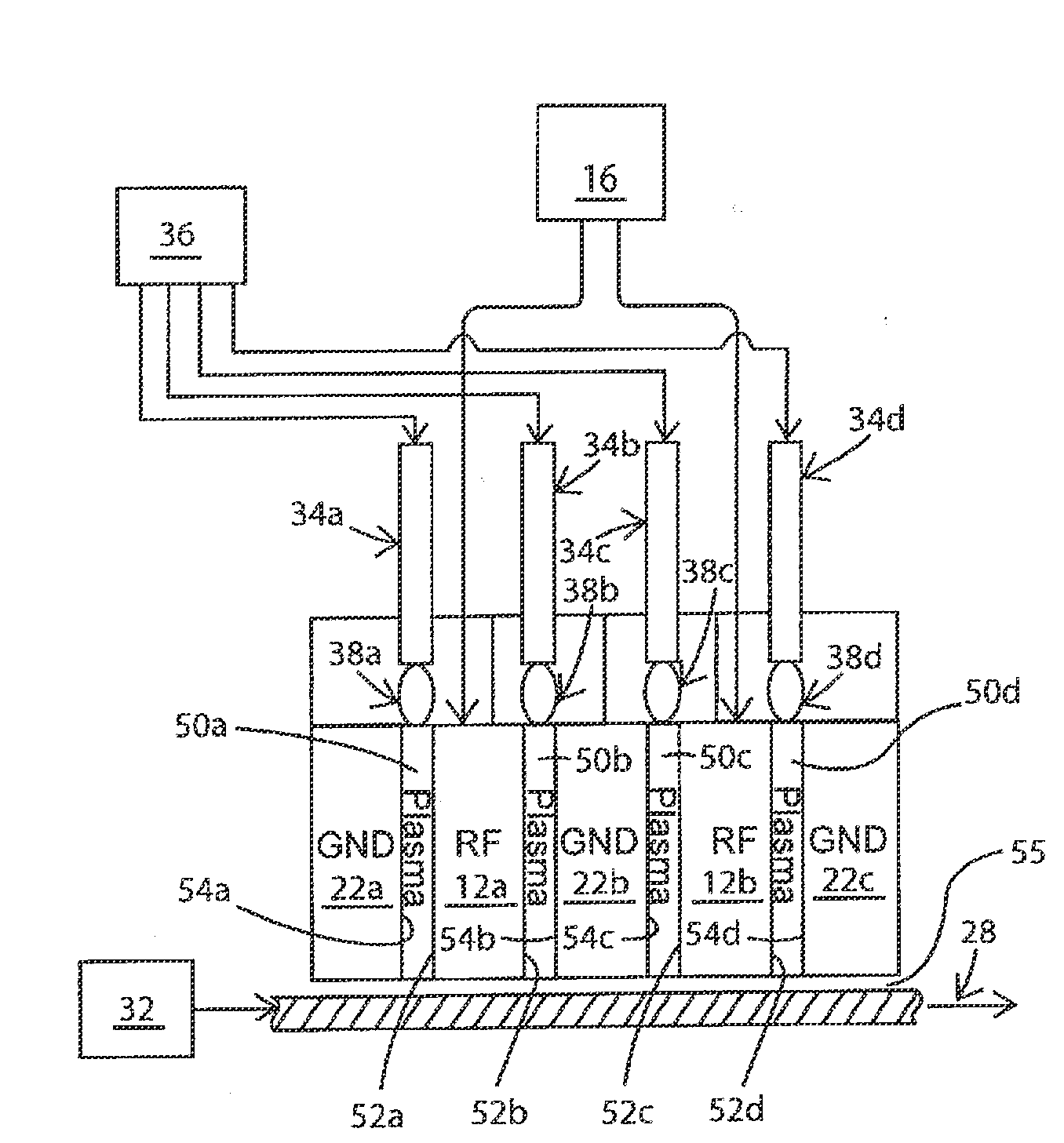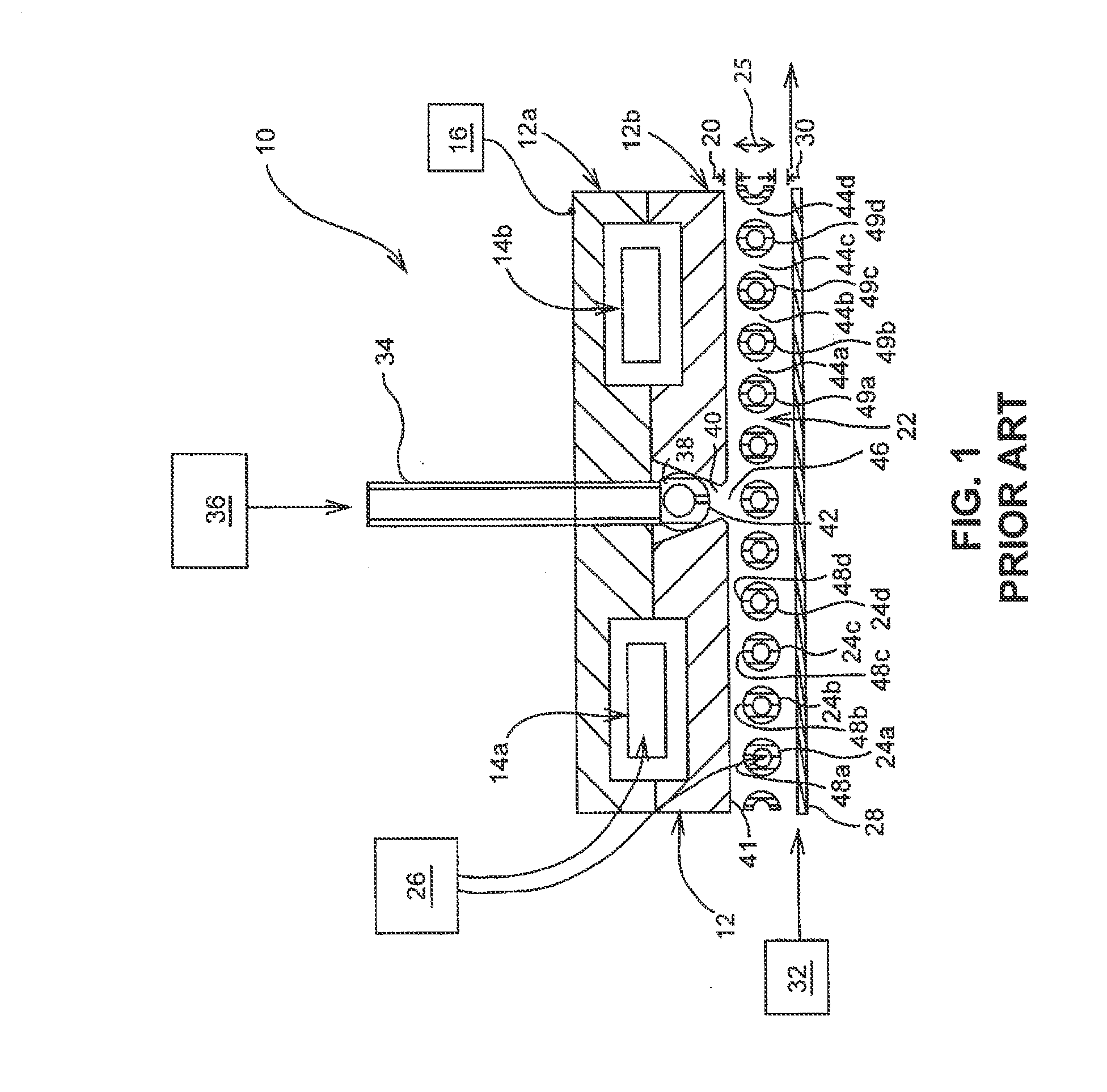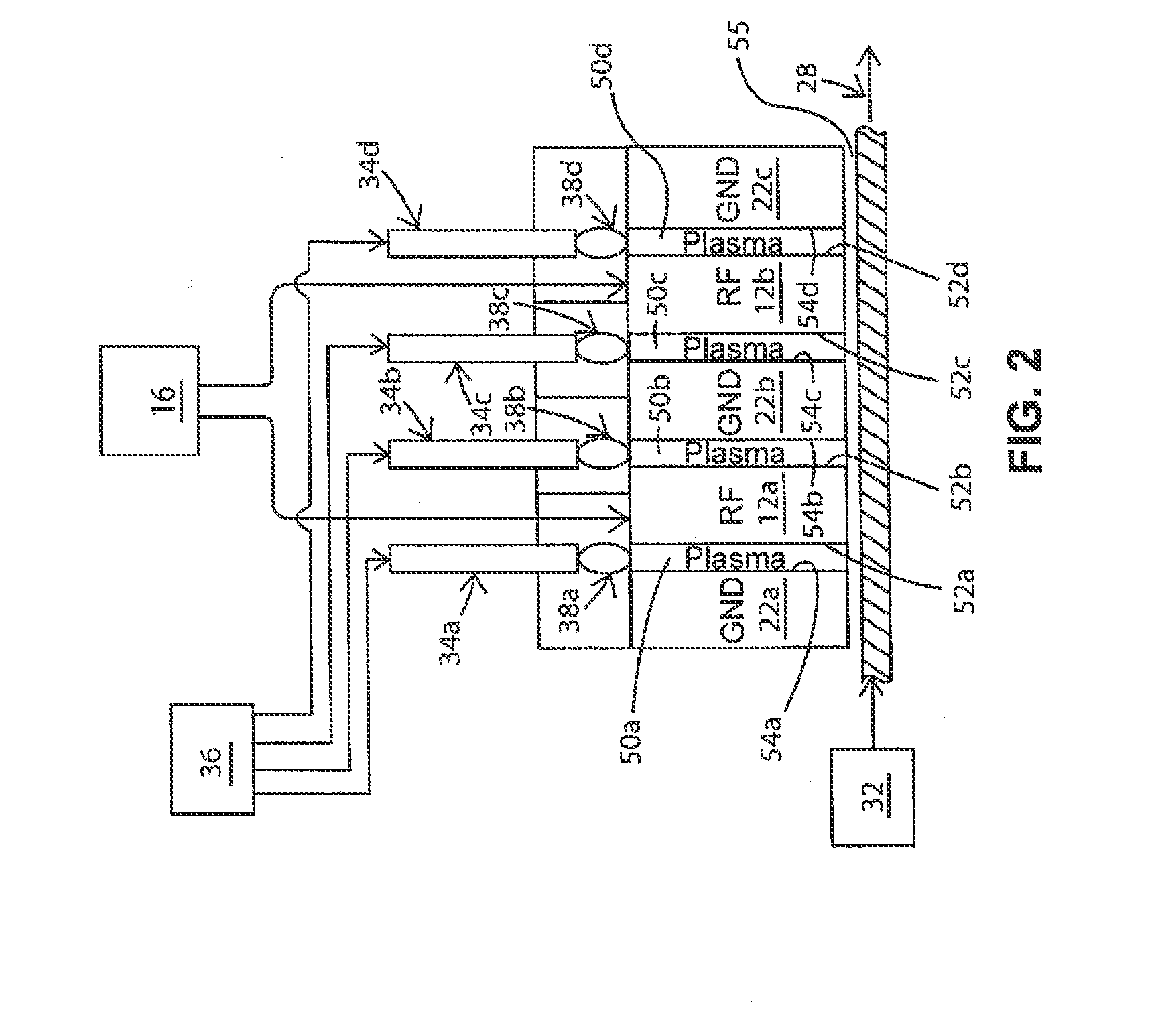Atmospheric-pressure plasma processing method
a plasma processing and atmospheric pressure technology, applied in the direction of liquid/gas/vapor textile treatment, manufacturing tools, textile treatment, etc., can solve the problems of limited plasma treatment of commercially important substrates, complicated and prohibitively expensive treatment of these substrates using vacuum-based plasmas, and limited power density that a dbd discharge can achieve. achieve the effect of reducing the distance and fast plasma processing speed
- Summary
- Abstract
- Description
- Claims
- Application Information
AI Technical Summary
Benefits of technology
Problems solved by technology
Method used
Image
Examples
example 1
[0041]In the following EXAMPLE 1, use of the embodiment of the present invention illustrated in FIG. 3, hereof, with two powered plasma regions (13.56 MHz), for processing fabrics is described. Clearly, many substrates may be treated by embodiments of the present apparatus. A monomer, which is polymerized by the action of free radicals, such as an acrylate, is applied to the fabric by spraying, as an example. The monomer may have various functional groups suitable for imparting desired properties to the fabric including repellency, wicking, antimicrobial activity, flame retardancy, as examples. After application to the fabric, the treated portion is moved into the vicinity of plasma regions 50a-50d such that excited species therefrom impinge thereon. The monomer is cured as the treated fabric is exposed to the plasma products, forming thereby a polymeric material which adheres to the fabrics. As an example, the hydrocarbon portions of polymerized 2-(Perfluorohexyl) ethyl acrylate (c...
example 2
[0044]When the plasma gas is exposed to sufficient electric field from the electrode, active species generation occurs. Electrode heights investigated range from 1″ to ¼″. The thinner electrodes have smaller plasma volume, and hence require less RF power to maintain the plasma at a constant power density; therefore, RF power can be saved and smaller power generators can be used. Since the process results remain the same, there is an observed improvement in the YPM / kW metric. FIG. 8 is a graph of the power required in Watts at 13.56 MHz for achieving a score of 100 using the AATCC TM 22 water repellency spray test for undyed polyester poplin as a function of electrode height, for 0.25 in, 0.5 in, and 1 in. The fabric speed was 5 Yd / min., the process gas dose was 90L / Yd2 of He / N2 gas blend, the power density was 16 W / cm3 in each of 4 plasma regions (5 electrodes), the tube porosity was 53%, the electrode length was 12″, the electrode gap was 2 mm, and the electrodes to fabric spacing ...
PUM
| Property | Measurement | Unit |
|---|---|---|
| height | aaaaa | aaaaa |
| height | aaaaa | aaaaa |
| distance | aaaaa | aaaaa |
Abstract
Description
Claims
Application Information
 Login to View More
Login to View More - R&D
- Intellectual Property
- Life Sciences
- Materials
- Tech Scout
- Unparalleled Data Quality
- Higher Quality Content
- 60% Fewer Hallucinations
Browse by: Latest US Patents, China's latest patents, Technical Efficacy Thesaurus, Application Domain, Technology Topic, Popular Technical Reports.
© 2025 PatSnap. All rights reserved.Legal|Privacy policy|Modern Slavery Act Transparency Statement|Sitemap|About US| Contact US: help@patsnap.com



